Opinion & Analysis
Do you really need to buy new wedges?
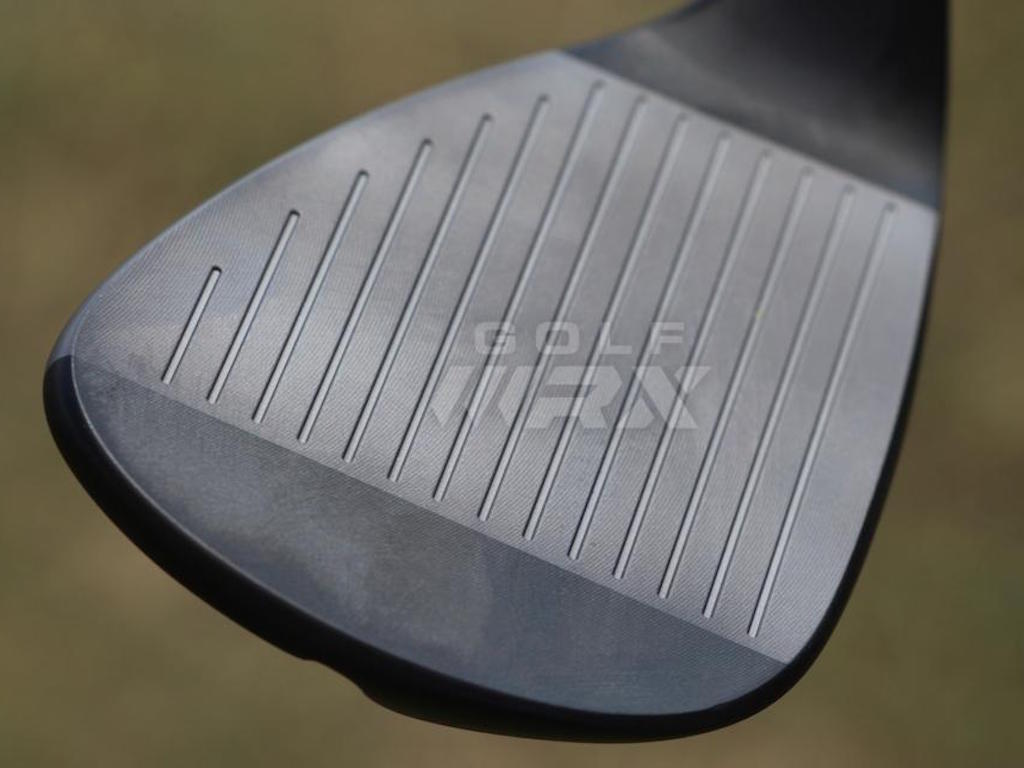
I’m as guilty as the rest of the golfing population when it comes to replacing my wedges too infrequently. Quite frankly, the only time I’ve changed them over the last few years is when I’ve been sent new clubs to test by my equipment sponsor.
If I was left on my own, I’m sure I would use my wedges until the paint fell off. It’s NOT the best idea, but my attitude has been like a lot of you in the golfing world: “It really doesn’t matter for as little golf as I play.”
This story was prompted by a few new wedges I was sent to try. We all hear about how often PGA Tour players change their wedges, and how much spin we’re losing by not changing our wedges more frequently. It is true?
To help you understand the real impact of worn grooves, I put it to the test. I hit four common wedge shots with three different wedges on Trackman that included:
- A new, 58-degree wedge
- A worn-out, 58-degree wedge (used for one season)
- A “super” worn-out, 58-degree wedge (used for multiple seasons)
The New Wedge
The Worn-Out Wedge
The “Super” Worn-Out Wedge
The Results
10-Yard Flop
- Super Worn: 3398 rpm
- Worn: 4262 rpm
- New: 4226 rpm
25-Yard Stock Shot
- Super Worn: 5249 rpm
- Worn: 4613 rpm
- New: 5291 rpm
40-Yard Stock Shot
- Super Worn: 6739 rpm
- Worn: 6195 rpm
- New: 6710 rpm
The only thing I can tell you about the 25- and 40-yard shot is that the super worn-out wedge seemed to have a sharper leading edge, and it felt like it was digging perfectly for my motion. As you can see in the Trackman screen shots at the bottom of this story, the ball was coming out flatter than the worn-out wedge, which decreased my spin loft and added spin.
For more information on spin loft with wedges, see “The Wedge Project” by Andrew Rice at www.andrewricegolf.com
Full Shot (80 Yards)
- Super Worn: 9435 rpm, peak spin rate of 10,117 rpm
- Worn: 10,260 rpm, peak spin rate of 10,400 rpm
- New: 10,641 rpm, peak spin rate of 11,121 rpm
The numbers tell us that wedge gurus are correct in saying that new wedges work better than the old ones when it comes to creating spin. The older the wedge, the less it will likely spin at all distances.
For that reason, I would suggest changing your wedges when you begin to see the initial effects of wear so you can keep your “grip” on the greens. The first signs include wedge shots that launch higher than normal — particularly from the rough — and don’t stop or spin back as much as they once did.
- LIKE242
- LEGIT56
- WOW12
- LOL15
- IDHT6
- FLOP21
- OB15
- SHANK128
19th Hole
Vincenzi’s LIV Golf Singapore betting preview: Course specialist ready to thrive once again

After another strong showing in Australia, LIV Golf will head to Sentosa Golf Club in Singapore looking to build off of what was undoubtedly their best event to date.
Sentosa Golf Club sits on the southern tip of Singapore and is one of the most beautiful courses in the world. The course is more than just incredible scenically; it was also rated 55th in Golf Digest’s top-100 courses in 2022-2023 and has been consistently regarded as one of the best courses in Asia. Prior to being part of the LIV rotation, the course hosted the Singapore Open every year since 2005.
Sentosa Golf Club is a par 71 measuring 7,406 yards. The course will require precise ball striking and some length off the tee. It’s possible to go low due to the pristine conditions, but there are also plenty of hazards and difficult spots on the course that can bring double bogey into play in a hurry. The Bermudagrass greens are perfectly manicured, and the course has spent millions on the sub-air system to keep the greens rolling fast. I spoke to Asian Tour player, Travis Smyth, who described the greens as “the best [he’s] ever played.”
Davis Love III, who competed in a Singapore Open in 2019, also gushed over the condition of the golf course.
“I love the greens. They are fabulous,” the 21-time PGA Tour winner said.
Love III also spoke about other aspects of the golf course.
“The greens are great; the fairways are perfect. It is a wonderful course, and it’s tricky off the tee.”
“It’s a long golf course, and you get some long iron shots. It takes somebody hitting it great to hit every green even though they are big.”
As Love III said, the course can be difficult off the tee due to the length of the course and the trouble looming around every corner. It will take a terrific ball striking week to win at Sentosa Golf Club.
In his pre-tournament press conference last season, Phil Mickelson echoed many of the same sentiments.
“To play Sentosa effectively, you’re going to have a lot of shots from 160 to 210, a lot of full 6-, 7-, 8-iron shots, and you need to hit those really well and you need to drive the ball well.”
Golfers who excel from tee to green and can dial in their longer irons will have a massive advantage this week.
Stat Leaders at LIV Golf Adelaide:
Fairways Hit
1.) Louis Oosthuizen
2.) Anirban Lahiri
3.) Jon Rahm
4.) Brendan Steele
5.) Cameron Tringale
Greens in Regulation
1.) Brooks Koepka
2.) Brendan Steele
3.) Dean Burmester
4.) Cameron Tringale
5.) Anirban Lahiri
Birdies Made
1.) Brendan Steele
2.) Dean Burmester
3.) Thomas Pieters
4.) Patrick Reed
5.) Carlos Ortiz
LIV Golf Individual Standings:
1.) Joaquin Niemann
2.) Jon Rahm
3.) Dean Burmester
4.) Louis Oosthuizen
5.) Abraham Ancer
LIV Golf Team Standings:
1.) Crushers
2.) Legion XIII
3.) Torque
4.) Stinger GC
5.) Ripper GC
LIV Golf Singapore Picks
Sergio Garcia +3000 (DraftKings)
Sergio Garcia is no stranger to Sentosa Golf Club. The Spaniard won the Singapore Open in 2018 by five strokes and lost in a playoff at LIV Singapore last year to scorching hot Talor Gooch. Looking at the course setup, it’s no surprise that a player like Sergio has played incredible golf here. He’s long off the tee and is one of the better long iron players in the world when he’s in form. Garcia is also statistically a much better putter on Bermudagrass than he is on other putting surfaces. He’s putt extremely well on Sentosa’s incredibly pure green complexes.
This season, Garcia has two runner-up finishes, both of them being playoff losses. Both El Camaleon and Doral are courses he’s had success at in his career. The Spaniard is a player who plays well at his tracks, and Sentosa is one of them. I believe Sergio will get himself in the mix this week. Hopefully the third time is a charm in Singapore.
Paul Casey +3300 (FanDuel)
Paul Casey is in the midst of one of his best seasons in the five years or so. The results recently have been up and down, but he’s shown that when he’s on a golf course that suits his game, he’s amongst the contenders.
This season, Casey has finishes of T5 (LIV Las Vegas), T2 (LIV Hong Kong), and a 6th at the Singapore Classic on the DP World Tour. At his best, the Englishman is one of the best long iron players in the world, which makes him a strong fit for Sentosa. Despite being in poor form last season, he was able to fire a Sunday 63, which shows he can low here at the course.
It’s been three years since Casey has won a tournament (Omega Dubai Desert Classic in 2021), but he’s been one of the top players on LIV this season and I think he can get it done at some point this season.
Mito Pereira +5000 (Bet365)
Since Mito Pereira’s unfortunate demise at the 2022 PGA Championship, he’s been extremely inconsistent. However, over the past few months, the Chilean has played well on the International Series as well as his most recent LIV start. Mito finished 8th at LIV Adelaide, which was his best LIV finish this season.
Last year, Pereira finished 5th at LIV Singapore, shooting fantastic rounds of 67-66-66. It makes sense why Mito would like Sentosa, as preeminent ball strikers tend to rise to the challenge of the golf course. He’s a great long iron player who is long and straight off the tee.
Mito has some experience playing in Asia and is one of the most talented players on LIV who’s yet to get in the winner’s circle. I have questions about whether or not he can come through once in contention, but if he gets there, I’m happy to roll the dice.
Andy Ogletree +15000 (DraftKings)
Andy Ogletree is a player I expected to have a strong 2024 but struggled early in his first full season on LIV. After failing to crack the top-25 in any LIV event this year, the former U.S. Amateur champion finally figured things out, finished in a tie for 3rd at LIV Adelaide.
Ogletree should be incredible comfortable playing in Singapore. He won the International Series Qatar last year and finished T3 at the International Series Singapore. The 26-year-old was arguably the best player on the Asian Tour in 2023 and has been fantastic in the continent over the past 18 months.
If Ogletree has indeed found form, he looks to be an amazing value at triple-digit odds.
- LIKE3
- LEGIT3
- WOW1
- LOL2
- IDHT0
- FLOP2
- OB0
- SHANK0
Opinion & Analysis
Ryan: Lessons from the worst golf instructor in America

In Tampa, there is a golf course that boasts carts that do not work, a water range, and a group of players none of which have any chance to break 80. The course is overseen by a staff of crusty men who have succeeded at nothing in life but ending up at the worst-run course in America. However, this place is no failure. With several other local courses going out of business — and boasting outstanding greens — the place is booked full.
While I came for the great greens, I stayed to watch our resident instructor; a poor-tempered, method teacher who caters to the hopeless. At first, it was simply hilarious. However, after months of listening and watching, something clicked. I realized I had a front-row seat to the worst golf instructor in America.
Here are some of my key takeaways.
Method Teacher
It is widely accepted that there are three types of golf instructors: system teachers, non-system teachers, and method teachers. Method teachers prescribe the same antidote for each student based on a preamble which teachers can learn in a couple day certification.
Method teaching allows anyone to be certified. This process caters to the lowest caliber instructor, creating the illusion of competency. This empowers these underqualified instructors with the moniker of “certified” to prey on the innocent and uninformed.
The Cult of Stack and Jilt
The Stack and Tilt website proudly boasts, “A golfer swings his hands inward in the backswing as opposed to straight back to 1) create power, similar to a field goal kicker moving his leg in an arc and 2) to promote a swing that is in-to-out, which produces a draw (and eliminates a slice).”
Now, let me tell you something, there is this law of the universe which says “energy can either be created or destroyed,” so either these guys are defying physics or they have no idea what they are taking about. Further, the idea that the first move of the backswing determines impact is conjecture with a splash of utter fantasy.
These are the pontifications of a method — a set of prescriptions applied to everyone with the hope of some success through the placebo effect. It is one thing for a naive student to believe, for a golf instructor to drink and then dispel this Kool-Aid is malpractice.
Fooled by Randomness
In flipping a coin, or even a March Madness bet, there is a 50-50 chance of success. In golf, especially for new players, results are asymmetric. Simply put: Anything can happen. The problem is that when bad instructors work with high handicappers, each and every shot gets its own diagnosis and prescription. Soon the student is overwhelmed.
Now here’s the sinister thing: The overwhelming information is by design. In this case, the coach is not trying to make you better, they are trying to make you reliant on them for information. A quasi Stockholm syndrome of codependency.
Practice
One of the most important scientists of the 20th century was Ivan Pavlov. As you might recall, he found that animals, including humans, could be conditioned into biological responses. In golf, the idea of practice has made millions of hackers salivate that they are one lesson or practice session from “the secret.”
Sunk Cost
The idea for the worst golf instructor is to create control and dependency so that clients ignore the sunk cost of not getting better. Instead, they are held hostage by the idea that they are one lesson or tip away from unlocking their potential.
Cliches
Cliches have the effect of terminating thoughts. However, they are the weapon of choice for this instructor. Add some hyperbole and students actually get no information. As a result, these players couldn’t play golf. When they did, they had no real scheme. With no idea what they are doing, they would descend into a spiral of no idea what to do, bad results, lower confidence, and running back to the lesson tee from more cliches.
The fact is that poor instruction is about conditioning players to become reliant members of your cult. To take away autonomy. To use practice as a form of control. To sell more golf lessons not by making people better but through the guise that without the teacher, the student can never reach their full potential. All under the umbrella of being “certified” (in a 2-day course!) and a melee of cliches.
This of course is not just happening at my muni but is a systemic problem around the country and around the world, the consequences of which are giving people a great reason to stop playing golf. But hey, at least it’s selling a lot of golf balls…
- LIKE17
- LEGIT2
- WOW0
- LOL4
- IDHT1
- FLOP4
- OB1
- SHANK23
19th Hole
Vincenzi’s 2024 Zurich Classic of New Orleans betting preview

The PGA TOUR heads to New Orleans to play the 2023 Zurich Classic of New Orleans. In a welcome change from the usual stroke play, the Zurich Classic is a team event. On Thursday and Saturday, the teams play best ball, and on Friday and Sunday the teams play alternate shot.
TPC Louisiana is a par 72 that measures 7,425 yards. The course features some short par 4s and plenty of water and bunkers, which makes for a lot of exciting risk/reward scenarios for competitors. Pete Dye designed the course in 2004 specifically for the Zurich Classic, although the event didn’t make its debut until 2007 because of Hurricane Katrina.
Coming off of the Masters and a signature event in consecutive weeks, the field this week is a step down, and understandably so. Many of the world’s top players will be using this time to rest after a busy stretch.
However, there are some interesting teams this season with some stars making surprise appearances in the team event. Some notable teams include Patrick Cantlay and Xander Schauffele, Rory McIlroy and Shane Lowry, Collin Morikawa and Kurt Kitayama, Will Zalatoris and Sahith Theegala as well as a few Canadian teams, Nick Taylor and Adam Hadwin and Taylor Pendrith and Corey Conners.
Past Winners at TPC Louisiana
- 2023: Riley/Hardy (-30)
- 2022: Cantlay/Schauffele (-29)
- 2021: Leishman/Smith (-20)
- 2019: Palmer/Rahm (-26)
- 2018: Horschel/Piercy (-22)
- 2017: Blixt/Smith (-27)
2024 Zurich Classic of New Orleans Picks
Tom Hoge/Maverick McNealy +2500 (DraftKings)
Tom Hoge is coming off of a solid T18 finish at the RBC Heritage and finished T13 at last year’s Zurich Classic alongside Harris English.
This season, Hoge is having one of his best years on Tour in terms of Strokes Gained: Approach. In his last 24 rounds, the only player to top him on the category is Scottie Scheffler. Hoge has been solid on Pete Dye designs, ranking 28th in the field over his past 36 rounds.
McNealy is also having a solid season. He’s finished T6 at the Waste Management Phoenix Open and T9 at the PLAYERS Championship. He recently started working with world renowned swing coach, Butch Harmon, and its seemingly paid dividends in 2024.
Keith Mitchell/Joel Dahmen +4000 (DraftKings)
Keith Mitchell is having a fantastic season, finishing in the top-20 of five of his past seven starts on Tour. Most recently, Mitchell finished T14 at the Valero Texas Open and gained a whopping 6.0 strokes off the tee. He finished 6th at last year’s Zurich Classic.
Joel Dahmen is having a resurgent year and has been dialed in with his irons. He also has a T11 finish at the PLAYERS Championship at TPC Sawgrass which is another Pete Dye track. With Mitchell’s length and Dahmen’s ability to put it close with his short irons, the Mitchell/Dahmen combination will be dangerous this week.
Taylor Moore/Matt NeSmith +6500 (DraftKings)
Taylor Moore has quickly developed into one of the more consistent players on Tour. He’s finished in the top-20 in three of his past four starts, including a very impressive showing at The Masters, finishing T20. He’s also finished T4 at this event in consecutive seasons alongside Matt NeSmith.
NeSmith isn’t having a great 2024, but has seemed to elevate his game in this format. He finished T26 at Pete Dye’s TPC Sawgrass, which gives the 30-year-old something to build off of. NeSmith is also a great putter on Bermudagrass, which could help elevate Moore’s ball striking prowess.
- LIKE8
- LEGIT3
- WOW1
- LOL1
- IDHT0
- FLOP3
- OB1
- SHANK2
-

 19th Hole2 weeks ago
19th Hole2 weeks agoJustin Thomas on the equipment choice of Scottie Scheffler that he thinks is ‘weird’
-

 19th Hole2 weeks ago
19th Hole2 weeks ago‘Absolutely crazy’ – Major champ lays into Patrick Cantlay over his decision on final hole of RBC Heritage
-

 19th Hole3 weeks ago
19th Hole3 weeks agoTwo star names reportedly blanked Jon Rahm all week at the Masters
-

 19th Hole3 weeks ago
19th Hole3 weeks agoReport: LIV Golf identifies latest star name they hope to sign to breakaway tour
-

 19th Hole3 weeks ago
19th Hole3 weeks agoNeal Shipley presser ends in awkward fashion after reporter claims Tiger handed him note on 8th fairway
-

 19th Hole2 weeks ago
19th Hole2 weeks agoBrandel Chamblee has ‘no doubt’ who started the McIlroy/LIV rumor and why
-

 19th Hole1 week ago
19th Hole1 week agoLET pro gives detailed financial breakdown of first week on tour…and the net result may shock you
-

 Equipment3 weeks ago
Equipment3 weeks agoJason Day on his recent switch into Srixon ZX5 and ZX7 Mk II irons

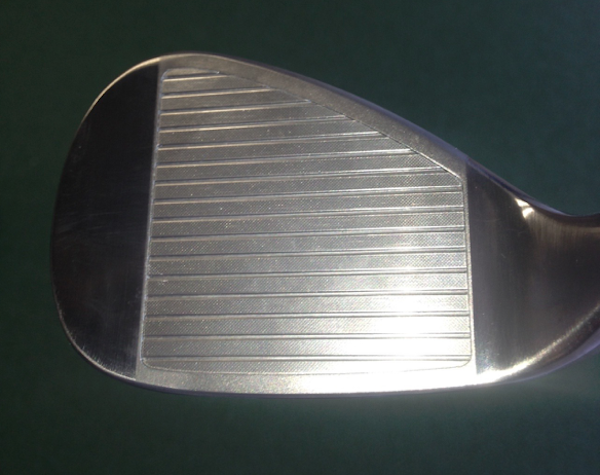
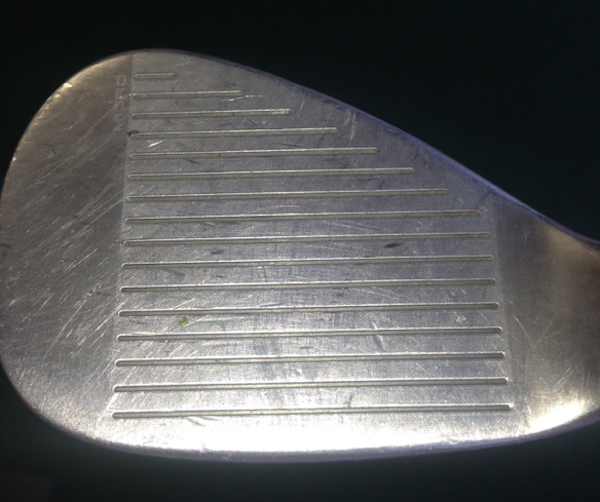
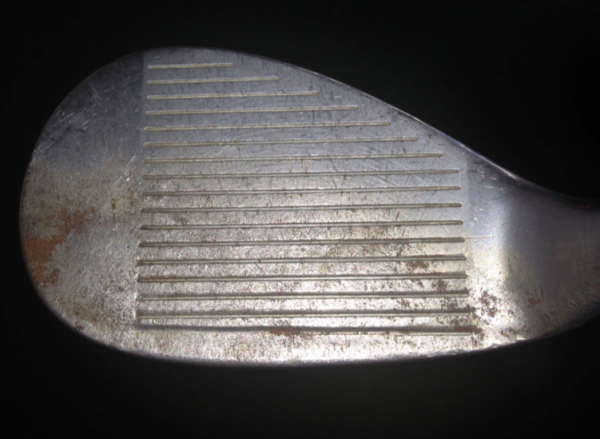
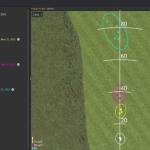
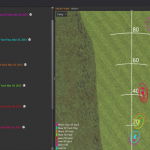
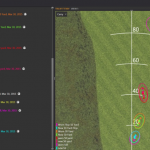

















cody
Jul 2, 2015 at 2:11 pm
This article makes no sense. your data does not back up your conclusion.
Steve Daniel
Apr 18, 2015 at 8:24 am
I would rather know the difference in “raw” vs “chrome” or other finishes. the golf ball I use has a bigger influence on spin than this test with new vs. old.
A
Apr 9, 2015 at 1:53 pm
So, a super worn wedge spins just as much or up to 1000 rpm less than a brand new wedge? That’s the real take-away, right? I suppose that can be also regarded as a 0% or 10-20% reduction.
How much spin does the ball have when it lands?
My understanding, I can’t reproduce the trackman article as I can’t find it at the moment, is that on full shots the spin rate of a ball when it hits the green will roughly be the same (about 500 rpm) and the “lift” aspect has worn off and so it descends.
My understanding is that the more spin that is generated at the start of the ball’s flight, the higher the launch, the shorter the distance the ball flies and the steeper the landing angle. And that it’s this last element, the landing angle, that allows the ball to land and spin back.
Not every player wants or needs that. Did this “study” compare the deviation in spin rates shot to shot? Did the new wedge spin the ball more consistently at the same rate vs the super old wedge, or was there more variance shot to shot? I’d rather know my shot will react similarly on each shot than be concerned solely with the quantity of spin. It’s rather frustrating when you hit the middle of the green and it spins back off the front, or you expect it to spin with your brand new wedge so you hit it 10 yards past and it just stays there. At least in the process of wearing down a wedge, you’ve become familiar with how it reacts. But if you have access to a tour van and you’re familiar with how a brand new wedge reacts, than by all means, swap ’em out every round.
Gary Gutful
Apr 7, 2015 at 3:41 am
There are some super smug gits that comment on these articles.
Personally, I am glad that there are contributors that bother with these experiments (even if the methods aren’t accredited by the Society of Data Crunching Golf Noobs).
Loving the rusty look of my Mack Daddys but would happily replace if/when they stop cutting the pistachios in the spin department.
marcus
Apr 6, 2015 at 9:49 am
This study is scientifically un-measurable. Thanks for trying though.
TheCityGame
Apr 7, 2015 at 10:31 am
I love it when a guy thinks he’s sounding smart but ends up saying something completely stupid.
“This study is scientifically unmeasurable”.
What the hell does that even mean, dude? Are you trying to measure the study? The STUDY is scientifically unmeasurable?
Is there a way that it is measurable but just not in a scientific way?
Do you mean the spin rate on the clubs is not measurable?
If you’re going to be that smug about it (“thanks for trying though”), you better be able to come up with better reasoning than “this study is unscientifically unmeasurable”. Nonsense.
Bob Pegram
Jun 15, 2015 at 6:36 pm
Maybe he means that there are so many variables in how each player’s swing, angle of attack, etc. reacts with the club and ball, that it is impossible to make general conclusions. Even the author of the article mentioned that he was used to the sharper front edge of his most worn wedge which may explain the high spin from that wedge. It works for his swing – or he has gotten used to it and made his swing work with it> – who knows?
MRC
Apr 4, 2015 at 12:20 am
Love my Mizuno wedges even after two years.
The grooves look a bit tired but they come alive on the course.
Thanks for the article Tom.
Dave
Apr 2, 2015 at 7:28 pm
So in order to prevent hitting shots that don’t spin, we need to change our wedges when we notice that they’re not spinning? What a waste of a read.
Ken N
Apr 2, 2015 at 4:52 pm
I just wrote to Barney Adams about this very topic a couple of weeks ago, so I was pleased to see it addressed here today. Part of my question that was left unanswered, though, was: aren’t today’s wedges made of tougher stuff, to last longer, than previous generations of wedges? If the limit was, say, 5,000 strikes per wedge five years ago, shouldn’t I expect to get 25% more out of today’s space-age-materials club? The Big Names are marketing them that way, and they’re certainly priced that way.
Scott
Apr 2, 2015 at 2:55 pm
Tom,
Tom,
Were you surprised that the differences were not more pronounced? Maybe I just can not comprehend the difference in 400 to 600 rpm, it does not seem like a lot. Although 1000 rpm on the full shot seems substantial, it would be nice to see was this means on the green in various conditions. I guess that is something that I can play with on my own.
A side question. I have used a grove sharpening tool. Are there tests at a USGA event to see if the wedges comply? If not, do you know of anyone getting call out for illegal grooves?
Thanks
other paul
Apr 2, 2015 at 2:33 pm
I like that the clubs are different but all the same loft. Because not everyone buys a new set of vokeys every year or two. Lots of people buy different brands each time. I played Cleveland two years ago, now vokeys, thinking of Mack daddy’s next time. This is probably more realistic for the majority of golfers.
other paul
Apr 2, 2015 at 2:07 pm
Well Tom, I look forward to the same article in 5 years when you have had time to spend $450 on 3 identical wedges. I hope you enjoy storing one, hitting one 10,000 times to wear it out, and hitting one 30,000 times to really wear it out. And then rewriting this article for all the angry people.
other paul
May 16, 2015 at 1:12 pm
Looks like there are two of us…
AndyP
Apr 2, 2015 at 1:22 pm
What I got from the article is go source some really old worm wedges from the bargain bin. Cheers
petie3_2
Aug 23, 2015 at 7:40 am
My wedges of choice are 30 year old pre-Vokey Titleists; they’re almost identical to Vokeys but slightly heavier and better in the wet, long grass and sand. I had to pay $9 for one. (sob, outrageous).
mark
Apr 2, 2015 at 1:00 pm
All the statements are correct. The article is correct in that a new wedge will give you more backspin. If it doesn’t interest, you then don’t buy a new wedge. Sandblasting the face is a cheaper alternative and makes the old wedge spin like new and you keep the same feel of the familiar wedge.
Philip
Apr 1, 2015 at 11:56 pm
I wonder if this is why we see so many PGA players with rusty wedges. Maybe the rough surface gives them a consistent spin that doesn’t tend to change as they replace wedges.
Mike
Apr 1, 2015 at 7:30 pm
According to Andrew Rice in The Wedge Project, it’s actually the surface area on the clubface between the grooves that through friction impart the majority of the spin on the golf ball. Andrew recommends to find a local business that does sandblasting and have them sandblast the face of your wedge a few time per year with aluminum oxide. I found a place that does it for $5 a club after which it spins like day it came off the rack.
Philip
Apr 1, 2015 at 11:53 pm
Same reason why some PGA players do not clean the sand out of their wedge grooves after coming out of the bunker – extra spin. I could put some water on my wedges and do a few practice shots in the sand before play to get them ready. I guess I could always empty the sand out of my bag after a few weeks or so.
Tom Stickney
Apr 1, 2015 at 5:04 pm
RG– I take umbrage that you feel this way; I do articles based on facts. I don’t sell clubs nor do I get paid to do these articles. Thus I have no bias other than the facts.
RG
Apr 1, 2015 at 10:53 pm
OR
The other thing is you can over spin a wedge. Sam Snead said,” I never made any money with my ball coming back at me.”
Jackie Burke still plays the same wedge he used to win Augusta in the 50’s.
The”facts” that you represent in your article are based on a data set from a machine, and from the photos you attached three dissimilar clubs. .Empirically speaking your data sets are flawed. In addition here are more “facts” that go into visualizing and creating good wedge shots. other than new grooves and more spin. Touch and feel have a lot to do with it and new wedges can be counter productive to this end.
Thank you for sharing and I do not mean any rudeness toward you and your findings, but your experiment is flawed,
Steve Daniel
Apr 18, 2015 at 9:10 am
Tom, don’t take offence.
as a retired engineer I like data, but there are too many things left unsaid in this review. for this to be a valid test you would need several sets of documented clubs with several samples of balls, people, and etc. that doesn’t mean that I didn’t enjoy the article. I do the same types of things myself.
Nathan
Apr 1, 2015 at 5:04 pm
Brand New Pro V1 Ball makes my wedges feel new again
Perry
Apr 1, 2015 at 12:58 pm
The only way I’d buy this is that if all 3 clubs were the exact same model with the exact same shaft. It’s an awesome idea, but I don’t think you’re comparing apples to apples. You’d get similar results if you had three different head/shaft combinations of new clubs.
Dave S
Apr 1, 2015 at 2:42 pm
Took the words right out of my mouth. From the pics, it’s pretty clear they are not the same brand.
RG
Apr 1, 2015 at 4:54 pm
You are 100% correct. This “article” is another in a long line of “you need to go buy new clubs” articles.
OR
The other thing is you can over spin a wedge. Sam Snead said,” I never made any money with my ball coming back at me.”
Jackie Burke still plays the same wedge he used to win Augusta in the 50’s.
Brody
Apr 1, 2015 at 12:15 pm
Tom,
Nice article, I enjoyed it. Would you foresee those Groove Sharpener tools making any difference on spin rates? Replacing wedges every season can certainly get expensive; I’d be interested in seeing if those tools make any difference on Trackman.
Steve
Apr 1, 2015 at 1:00 pm
+1
Jon
Apr 1, 2015 at 1:56 pm
The only problem with groove sharpeners is if you cut the grooves too deep that club becomes non-conforming. Since I don’t play in any USGA sanctioned tournaments and no longer maintain GHIN, I use the groove sharpener at the beginning of every season (Golf Works part no. GW1111) and it does a pretty good job. It saves me $120/year which buys me about 3 rounds of golf.
Mikko U
Apr 1, 2015 at 11:56 am
Interesting to read that there wouldn’t be much difference on partial swings. For me there was a huge difference going from three years old wedges to new ones even on 40-yard chip/pitch shots. They turned into hop and stop rather than hop and roll out.
Also, isn’t there quite a lot of slippage from any 58* wedge? So wouldn’t some 50-52 degree wedges have worked better as there’s less slipping due to the loft and the grooves would have probably made a bigger difference (or showed more precisely that there isn’t a difference)?
Chuck
Apr 1, 2015 at 11:42 am
I don’t doubt the data; but almost as important to spin, is the feel I have developed with older wedges. Weight, balance, bounce, etc. Before the groove rule went into effect, I bought a handful of the kind of gap wedge (Vokey 452.08) and sand wedge (Vokey 258.08) that I love, and I nurse them as much as possible. So while the grooves do get worn, at least they are pre-rule grooves. Legal for me until 2024.
This all gives real meaning to the short-lived (why???) TaylorMade solution, which was to supply exchangeable faces for its XFT series wedges.
http://www.taylormadegolf.asia/bn/xft-wedge-specifications.php